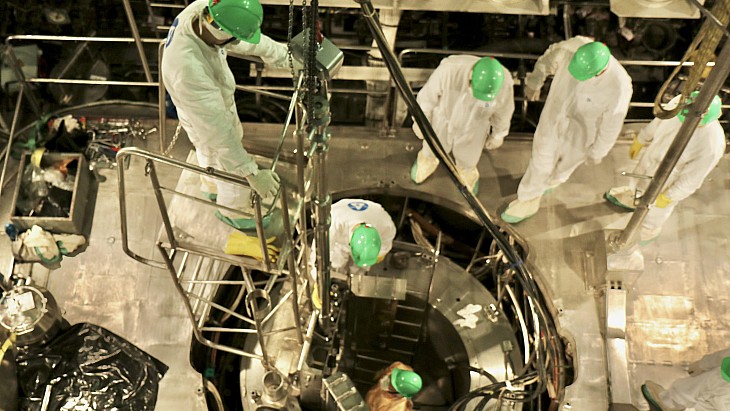The world's only floating nuclear power plant, it is operated by Rosenergoatom, the electric power division of Rosatom, and is based in Pevek in the Chukotka region of Arctic Russia.
Akademik Lomonosov, which was put into commercial operation in May 2020, supplies heat and power to the town and is based on two KLT-40S reactors generating 35 MWe each, which are similar to those used in a previous generation of nuclear powered icebreakers.
It has been described as a pilot project and a 'working prototype' for a future fleet of floating nuclear power plants and on-shore installations based on Russian-made small modular reactors intended for deployment in hard-to-reach areas of Russia's North and Far-East, as well as for export. Named after the 18th century Russian scientist Mikhail Lomonosov, it is 144 metres long and 30 metres wide, and has a displacement of 21,000 tonnes.
The fuel was delivered by TVEL, Rosatom's fuel division, via the Northern Sea Route to the site. It was manufactured by TVEL's Elektrostal Machine-Building Plant, which is in the Moscow region. TVEL says that unlike land-based large reactors which generally require replacement of a proportion of their fuel rods every 12-18 months "in the case of these reactors, the refuelling takes place once every few years and includes unloading of the entire reactor core and loading of fresh fuel into the reactor". It says this means there can be up to 3.5 years between refuellings.
Alexey Fedotov, chief mechanical engineer of Akademik Lomonosov, said: "During the work on nuclear fuel reloading, all necessary measures were taken to ensure radiation safety requirements. Before loading into the reactor, each of the 121 fuel assemblies underwent strict acceptance control. All assemblies, after a thorough check by specialists, are sequentially placed into the reactor using automated crane equipment."
The chief physicist at the site, Maxim Shamambaev, said: "The radiation background on the territory ... did not change during these works, it corresponded to the level of the natural background characteristic of the city of Pevek."
The next reloading of nuclear fuel - of the second reactor on the floating power plant - is due to take place in 2024.
The town of Pevek has a population of about 4000. The floating plant could potentially supply electricity to a city of 100,000. Since commissioning it is replacing the Bilibino nuclear power plant as it is retired, having operated since 1974, and the Chaunskaya thermal power plant which had been operating for more than 70 years. It also supplies power more widely in the region, including to mining companies involved in the development of the Baimsk ore zone.
Rosatom is already in the process of constructing four floating power units and is targeting the export market for floating nuclear power plants with capacity of at least 100 MWe and an assigned service life of up to 60 years featuring RITM-200M reactors, derived from those used on Russia's latest nuclear-powered icebreakers.





_82983.jpg)
_34792.jpg)
_16403_79272.jpg)


_76087_55556.jpg)



